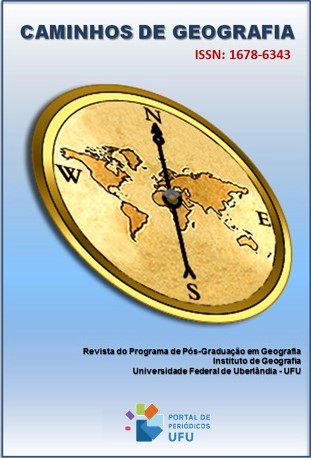MAPEAMENTO E ANÁLISE DE VULNERABILIDADE SOCIAL NO MUNICÍPIO DE BARCARENA-PA
DOI:
https://doi.org/10.14393/RCG249161628Palavras-chave:
Vulnerabilidade Social, Análise Fatorial, GeoprocessamentoResumo
Municípios são os locais ideais para estudos sobre vulnerabilidades sociais, por serem unidades territoriais onde emergem fragilidades sociais e os conflitos são latentes. Por essa razão, o objetivo deste artigo foi operacionalizar empiricamente o conceito de vulnerabilidade social, através de um indicador de vulnerabilidade com integração de dados socioeconômicos do Censo 2010 do IBGE para mapear e analisar situações de suscetibilidade em escala municipal em Barcarena-PA. Para isso, classificou-se a vulnerabilidade utilizando um estudo de análise fatorial no software SPSS 24 e, posteriormente, visualizaram-se os dados no software QGIS 3 para identificação dos recortes espaciais vulneráveis. Os resultados mostraram que a grande maioria dos setores censitários se encontra em situação de vulnerabilidade de moderada a alta. Em seguida, os 10 setores censitários mais vulneráveis foram ranqueados, constatando-se que as zonas críticas se localizam na região das ilhas, rural e bairros de ocupação espontânea em Vila dos Cabanos e na velha Barcarena. Destaca-se a existência de diferenças sociais entre o distrito planejado (Vila dos Cabanos) e um não planejado (sede de Barcarena). Constata-se assim que município possui muitas disparidades, as quais necessitam de um enfrentamento e intervenção de políticas efetivas urgente.
Downloads
Downloads
Publicado
Edição
Seção
Licença
Copyright (c) 2023 Stephanie Jael Negrão de Freitas, Márcia Aparecida da Silva Pimentel, Edson Marcos Leal Soares Ramos, Giordani Rafael Conceição Sodré, Paulo Amador Tavares, Joyce Gama Souza

Este trabalho está licenciado sob uma licença Creative Commons Attribution-NonCommercial-NoDerivatives 4.0 International License.
Autores que publicam nesta revista concordam com os seguintes termos: a) Autores mantém os direitos autorais e concedem à revista o direito de primeira publicação, com o trabalho licenciado sob a Creative Commons Atribuição-NãoComercial-SemDerivações 4.0 Internacional. b) Autores têm permissão e são estimulados a publicar e distribuir seu trabalho online (ex.: em repositórios institucionais ou na sua página pessoal), já que isso pode gerar alterações produtivas, bem como aumentar o impacto e a citação do trabalho publicado. c) Em virtude de aparecerem nesta revista de acesso público, os artigos são de uso gratuito, com atribuições próprias, em aplicações educacionais e não-comerciais.











